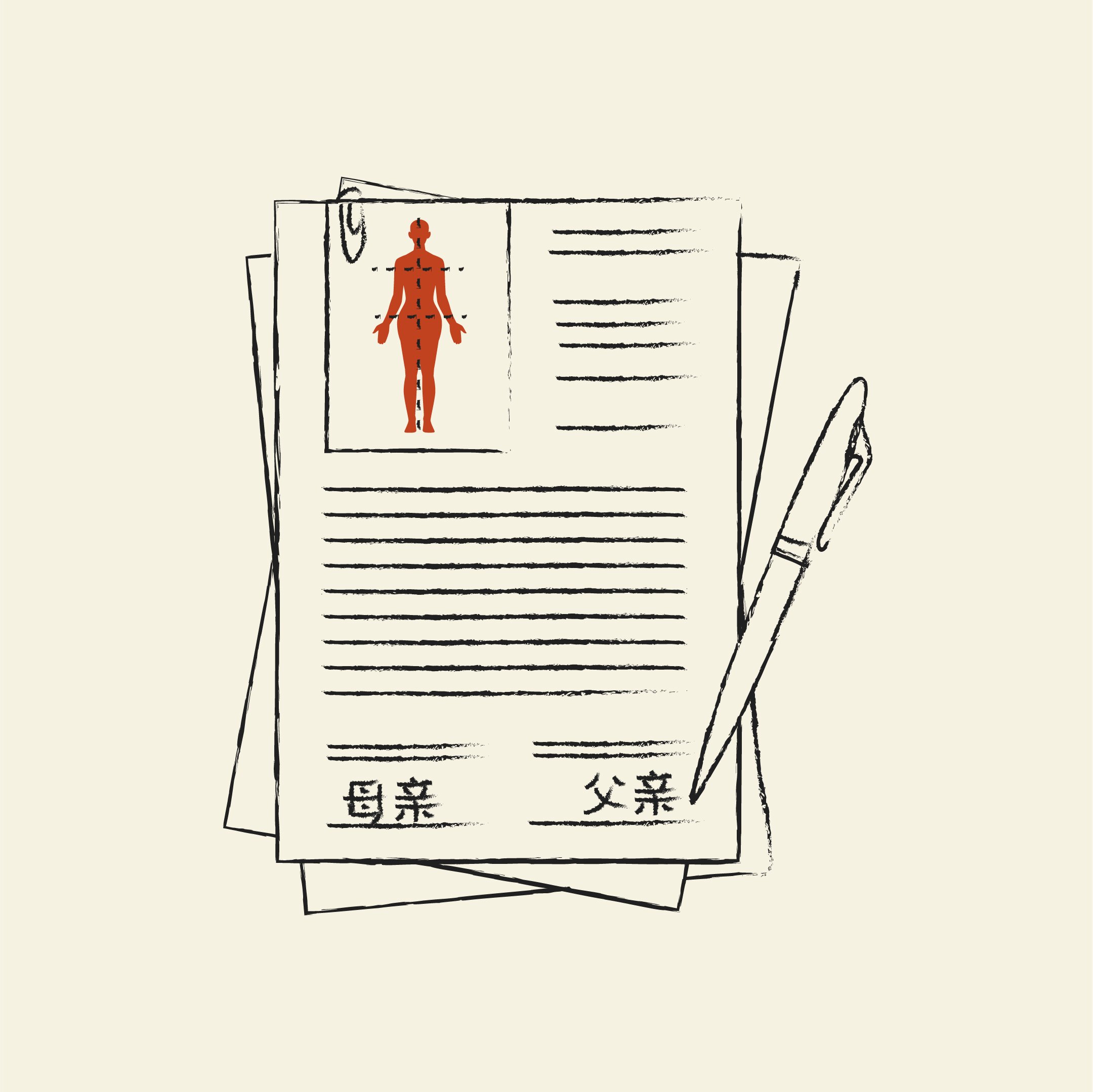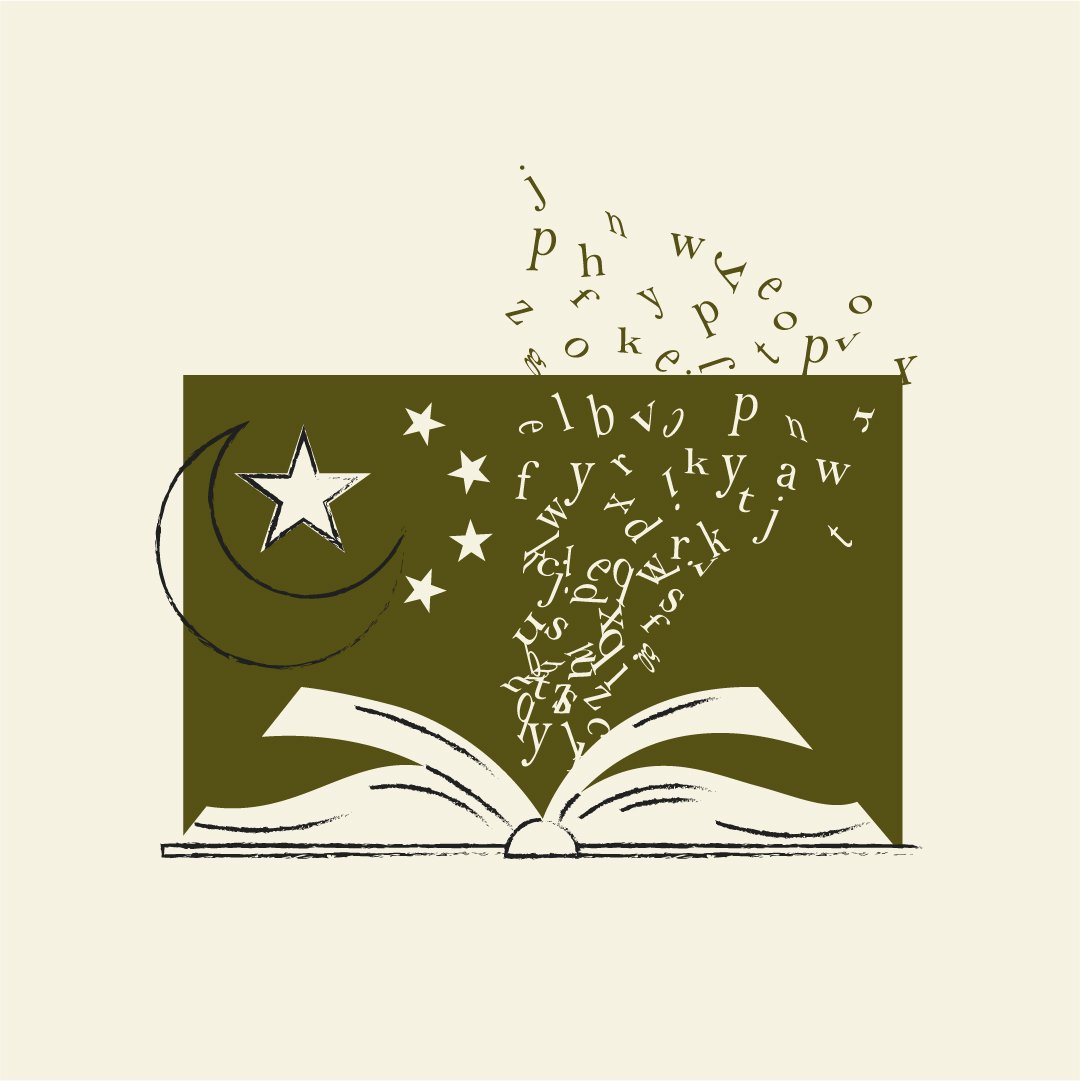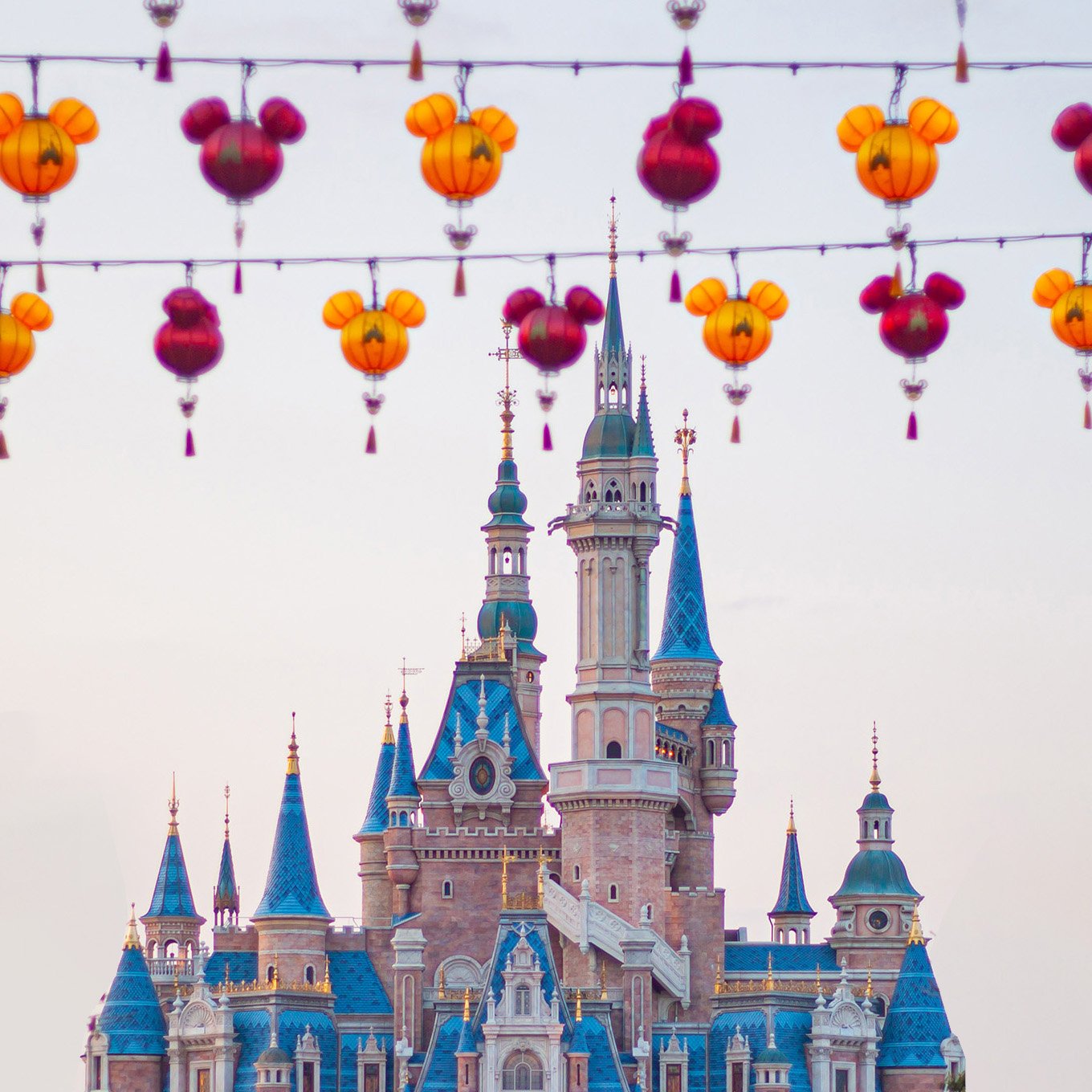Who’s Afraid of Mickey Mouse?
Why the Disney formula doesn’t work in China.
JUNE 4, 2024
At Shanghai Disney Resort, which opened in 2016, the longest meet-and-greet lines are not for Mickey Mouse or Winnie the Pooh, but for LinaBell, a pink fox. At 7:53 am on a rainy summer’s day, an influencer named Yiwan was already queuing to meet her. The 20-something recorded her wait, showing the hours pass by on her phone as the rain continued to pour down. “Has anyone else tried this hard for LinaBell?” she asked in one of the segments. Finally, at 3:34 pm, there she was in all her pink glory: Shanghai Disneyland’s most popular attraction, LinaBell the fox.
LinaBell made her first appearance at Shanghai Disneyland in late 2021. Unlike other Disney characters, she has no back story, no plot arc. She does, however, have a mercurial temper. She’s bubbly and she loves to dance. She covers visitors’ faces with kisses. She plays with the tails of her friends and then runs away. There’s arguably a less Disney side to her as well. She can storm off and pretend to throw someone into a pond nearby. She can scrunch herself up as if controlling her anger. She shakes her paw indignantly and then almost immediately calms herself down.
Yiwan, dressed in pink to match LinaBell, whipped out a pink fake diamond ring, the rock as big as a toddler’s palm, and tried to slide it over a finger on one of LinaBell’s paws. It didn’t fit, but that didn’t matter: Yiwan had also brought a bigger ring, with a diamond almost as big as her fist. This one fit. LinaBell hugged Yiwan; they air-kissed; Yiwan pressed her face into LinaBell’s pink fur head.
The post received 360,000 likes, Yiwan’s best performing post in the last year by far. The success of the video shows how beloved this Disney character, little-known outside of China, really is. LinaBell is an unfamiliar phenomenon for the custodians of the world’s most famous rodent: Mickey is a small mouse in a big pond.
✺
Disney is making money in China, but it doesn’t hold the cultural cachet that it does in other parts of the world. What a viewer outside China might recognize as typically Disney — the stock characters, the blockbuster films — aren’t as relevant inside the country. Disney’s China business includes movies, theme parks and merchandise, though the number of foreign films shown in theaters in China is limited and Chinese regulators have never approved a Disney TV channel nor, more recently, the Disney+ streaming service, which offers its Walt Disney Pictures films.
Disney may set the pop-culture agenda globally, but, when it comes to China, it’s having to fit into trends created by the Chinese populace.
Recent Disney forays into the Chinese movie industry have been hit and miss. Films from Marvel’s Avengers series, which is owned by Disney, did well. Avengers: Endgame (2019) made its way into the top ten grossing movies of all time in China, earning $590 million (4.25 billion yuan). But the live-action The Little Mermaid (2023) bombed in comparison, grossing just $3.7 million (26.8 million yuan), as did the live-action Mulan (2020), which grossed $40.7 million (294.7 million yuan).
At the same time, Chinese studios have been getting better. There are now plenty of Chinese blockbusters. In 2019, the animated fantasy film Ne Zha, about a mythological demon child who is destined to die, and tries to fight his fate, outstripped Zootopia’s success, grossing $725 million (50.4 billion yuan). This year’s top film in China, YOLO, about an overweight, depressed woman who reshaped herself through boxing, premiered at prime-time during Lunar New Year celebrations, and grossed $478 million (3.46 billion yuan) in China within a month of its release. Clips from the movie were all over Chinese social media. It became impossible to book my usual boxing class in Beijing. No Marvel film has had that kind of effect.
Disney may set the pop-culture agenda globally, but, when it comes to China, it’s having to fit into trends created by the Chinese populace. “If you’re asking me whether I’m as optimistic as I once was about growing our business in China,” Disney CEO Bob Iger said in November last year, “the answer would be no.” And when it comes to Disney’s classic characters, they don’t have the sway they have elsewhere. But a pink fox who has never been in a movie can quickly become a star. This certainly wasn’t the plan.
Back in the 1990s, China looked like a market waiting for an American entertainment giant. Bob Iger, then — and now — Disney CEO, thought big, theme-park big. His plan in the summer of 2016 was, as he wrote in his autobiography The Ride of a Lifetime, “open Shanghai and then retire.” China had the potential to double Disney’s US market, with a generation raised on the company’s cartoons, fueling demand for imported movies and a constellation of parks. It was a big bet. “We had never invested so much in something, with so much potential — for success or failure — in our nearly hundred-year history,” Iger wrote of Shanghai Disneyland.
When Disneyland opened in 2005, she got to play in a different way. And she loved it. “So beautiful, so exciting, so happy,” she said.
Disney’s entrance into China before Iger had been gradual. Snow White premiered in Shanghai in 1938, just a few months after its US premiere. In 1986, Mickey Mouse and Donald Duck made their debut on Chinese television. The first Disney theme park in the China region opened in Hong Kong in 2005. To people like my aunt, who grew up in the ’60s, Hong Kong Disneyland Resort was a revelation. “It was so big, there was so much to play with,” she said. Even though she was already well into her 30s then, she was drawn into the Disney universe, which she then recreated in her home.
Opening any cupboard in her flat requires grasping handles shaped like Mickey Mouse’s ears. His silhouette is printed on her bathroom tiles, and she keeps over a hundred figurines of him in a glass cabinet in the lounge. The only other objects stored in that cabinet are images of my grandfather and grandmother.
My aunt grew up in Hong Kong with smaller-scale amusement parks that had carousels and ferris wheels. She remembers playing a game at these parks: ceramic tiles were laid out on a table and players tried to throw coins on top of the tiles and not in the cracks. It wasn’t that easy. “I don’t remember coming home with a toy,” she said. When Disneyland opened in 2005, she got to play in a different way. And she loved it. “So beautiful, so exciting, so happy,” she said. To see a 3D film there was a new experience. She has visited Hong Kong Disneyland eight times in the past 20 years. All you have to do at the park is queue up and then watch the entertainment. “In Disneyland, everything else moves but you,” she said. Once Hong Kong Disneyland opened, the other parks closed soon after.
To the generation growing up in ’90s mainland China, anything imported was a step up from the domestic films. They’d often be marketed simply as meiguo dapian (“major American film”), which would be enough to get people to the cinema. The consensus was that American films needed to be viewed on a big screen, and domestic ones could be watched at home.
But ask Chinese people in their twenties or thirties today and their nostalgia for Disney is limited. Beloved childhood memories mostly concern Japanese cartoons, or domestic cartoons like “Calabash Brothers” and “Black Cat Detective.” There were dramas little-known outside the Chinese-speaking regions like “My Fair Princess,” as well as police procedurals and Hong Kong writer Louis Cha’s martial arts epics.
Some read Mickey Mouse comics, but full-color printed magazines were expensive in the ’90s. Documentary filmmaker Liu Zhangbolong, who compared a local amusement park and Shanghai Disneyland in his documentary, Disneyland is too far, come to Shijingshan, said to me that he remembers these magazines as coveted objects in his childhood. But over time, their popularity waned.
When I visited Hong Kong Disneyland this April with my aunt, I didn’t see anyone who was ecstatic. From the moment we set foot in the Disneyland metro line carriage, we were surrounded by bronze Mickey Mouse statuettes. We threaded our fingers into Mickey Mouse ear-shaped handles. Through the gates, we entered a world where paper is never flat, but always wrapped into a scroll, where the color palette is that of a children’s bedroom.
Disney spent more on Shanghai Disneyland ahead of its grand opening in 2016 than it did on Disney World.
According to a canvasser standing near the entrance, most people there that day were either locals or were down from Guangxi province on mainland China for a long weekend holiday, or from Guangdong province, bordering Hong Kong. I watched one father from Shenzhen, standing in the middle of a merry-go-round, intent on taking as many pictures of his son as he could. He didn’t look miserable, but he didn’t look too excited either.
The park is in its own bubble, which is only punctured by the sight of the occasional plane in the sky, as Hong Kong airport is only 15 kilometers away on the same island.
✺
Shanghai Disneyland took about 18 years to build. Iger met with three presidents of China, and faced a setback of two years when the Shanghai’s party chief, Chen Liangyu, was arrested for corruption for embezzling local pension funds (Chen was later sentenced to 18 years in prison). The scandal stalled project approvals in the city. Disney held casting calls for actors in six Chinese cities and up to 14,000 workers lived on the property to build it, according to Iger’s book.
Disney spent more on Shanghai Disneyland ahead of its grand opening in 2016 than it did on Disney World. The Florida theme park, which opened Magic Kingdom Park in 1971, cost $400 million to build, which is equivalent to $2.2 billion at the time that Shanghai Disneyland began construction in 2011. Shanghai cost $6 billion to build, according to Iger.
[Read: The Chinese Migrants of Chiang Mai]
But, as time went on, that 2016 optimism, the belief that China would be a huge new market tempered. In a 2022 post-earnings conference call, Bob Chapek, then Disney CEO, said that it was difficult to distribute films in China for business and political reasons. But he said that they were “pretty confident” that the Chinese market didn’t “really preclude our success.” Six months later, Iger returned as CEO and emphasized that the company’s setbacks were due to wavering US-China relations. “I think it’s pretty obvious that issues between our countries tensions have had an impact on business, not just Disney’s but on other companies as well,” he said.
What has worked is LinaBell. LinaBell was introduced to Shanghai Disneyland visitors as a friend of Disney character Duffy. Unlike Mickey, Iron Man and other Disney classics, LinaBell doesn’t star in any Disney features. She doesn’t have her own cartoon, nor does she headline her own movie. Nonetheless, she is the star of Disney in China, and popular in Asia. She will likely appear in the upcoming six-part series “Duffy and Friends TV” show on Disney+, which aside from being available in the US and much of Europe, is also available in the large Asian economies like India, Indonesia, South Korea, Japan. What’s not yet known is whether audiences within China will get to watch it.
LinaBell’s success has bucked the Disney formula. The long-held belief was that characters or brands need stories to be successful. But in China, no-back-story LinaBell is arguably the brand’s greatest success. For a lot of people, she is what you go to Disneyland for. As soon as she launched, influencers seized on her. She appears regularly on Disney’s social media accounts, but most of the posts about her come from visitors to Disneyland. Viral videos of the character flood all China’s social media platforms like Douyin (the original TikTok), Xiaohongshu and Bilibili.
But in Shanghai Disneyland, he remembers an empty lawn taken up by people playing cards and taking naps.
A meet-and-greet with LinaBell takes a different direction each time. Star-chasing culture, where fans express a feverish devotion towards the idol of their choice — buying products to support them, taking any opportunity to see them, and sending them presents as if they were a child or lover, has already been a huge entertainment trend in China. The difference is that fictional characters are now included as stars. When visitors talk about their interactions with LinaBell, they often call it “zhiyu,” which means healing. LinaBell is like comfort food. She soothes. Zhiyu is an escape from the anxiety and stress of real life. In several social media posts on Xiaohongshu, which is similar to Instagram, people say that buying an annual Disneyland card is in fact buying a top-up card for their mental health.
Most of the company seems to be caught by surprise by her popularity. “If you say she’s cute, yes — but so are other characters,” one Shanghai Disneyland employee said to me. “Perhaps in this day and age, appearances are the most important thing.”
When I asked why Mickey isn’t as popular as LinaBell, the Disney employee said, “Maybe it’s because the stories come from abroad and people feel some distance.” LinaBell, “is like your stuffed toy has come alive. People relate more to that.”
At Florida Disney World, Liu, the documentary filmmaker, said that even the staff who weren’t cast members had a strong Disney identity. Disney is all about creating dreams. But in Shanghai Disneyland, he remembers an empty lawn taken up by people playing cards and taking naps.
“Authentically Disney and distinctively Chinese,” Iger once called Shanghai Disneyland. Disneyland is popular in China, but not in the way that Disney intended. Instead of playing along with the stories that have already been dreamed up for them, people shape their idols in the vision that they dream up themselves.
PHOTO: Edited image, original ‘Shanghai Disneyland’ by Alejandro Caceres, 2021. (via Flickr, CC BY-NC 2.0 DEED)



